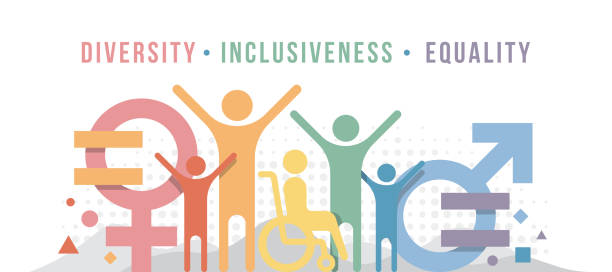Transforming Market Research with DEI-Focused Sampling Strategies

Introduction
In the changing field of business and research, the concepts of Diversity, Equity, and Inclusion are crucial for how companies collect and understand data. The practice of DEI in Sampling offers a fresh perspective, ensuring that research is representative and reliable. This article unpacks the nuances of DEI in Sampling and sheds light on its invaluable contribution to the research industry.
DEI in Sampling: A Comprehensive Insight
Sampling is the heart of any research, determining its success and validity. With DEI integrated into sampling methods, researchers can ensure that the data gathered is not just extensive but also inclusive.
The Importance of Diversity in Sampling
Diversity goes beyond just numbers. In the world of market research, it ensures that various demographic groups are adequately represented. This leads to insights that are more reflective of the entire target population, rather than just a segment.
Equity: Leveling the Playing Field
It’s not about having different viewpoints, it is also about making sure that all of those opinions are treated with same importance. Equity in sampling ensures that every participant’s feedback is valued equally, avoiding any inherent biases.
Inclusion: Beyond Numbers to Narratives
Inclusion is the art of ensuring everyone feels valued. When sampling takes into account diverse voices and treats them with respect, it cultivates richer insights that resonate with a broader audience. Embracing DEI in sampling is more than just a trend; it’s a step towards making research more inclusive. By valuing every voice, researchers can uncover insights that were previously overlooked or undervalued.
Challenges Faced in DEI Sampling
Like every revolutionary concept, DEI in sampling also has its hurdles. From ensuring representation without tokenism to combating deep-seated biases, the road to perfecting DEI in sampling is paved with challenges.
Benefits of DEI in Modern Research
- DEI promotes and encourages a wider variety of viewpoints and experiences, thus boosting creativity and innovation. Diverse research teams bring unique insights, leading to more comprehensive and impactful outcomes.
- DEI ensures fair access to research opportunities, promoting social justice and equality. When people from marginalized communities can get the same opportunities, society becomes fairer by spreading information and resources more evenly.
- DEI enhances how research connects with different people and tackles practical, real-world problems. It fosters cultural competence, enabling researchers to navigate global complexities and collaborate effectively.

Best Practices for DEI in Sampling
1. Diverse Representation: Ensure your sample reflects the diversity of your target population.
2. Inclusive Outreach: Use inclusive language and outreach strategies to reach underrepresented groups.
3. Avoid Bias: Minimize bias by using random sampling methods and avoiding discriminatory criteria.
4. Data Privacy: Respect privacy and confidentiality to build trust with participants.
5. Analyze & Report: Analyze data by demographic factors and report findings to address disparities.
6. Continuous Improvement: Continuously assess and improve DEI efforts in sampling processes.
Future of DEI in Sampling
The future of Diversity, Equity, and Inclusion (DEI) in sampling involves a commitment to representative and inclusive data collection. Organizations will increasingly prioritize diverse sample populations to avoid bias and ensure fair representation. Technology will play a crucial role in automating unbiased sampling methods, fostering a more inclusive approach to research and decision-making. Continuous education and awareness will further promote DEI values in sampling practices.
FAQs
- What is DEI in Sampling?
DEI in Sampling refers to the integration of Diversity, Equity, and Inclusion principles into the process of selecting participants for market research.
- Why is DEI important in sampling?
DEI ensures that all demographic groups are adequately represented in research, leading to more accurate and actionable insights.
- How does equity differ from diversity in sampling?
While diversity focuses on including various groups in research, equity ensures that every participant’s feedback is valued equally.
- Are there any challenges with implementing DEI in sampling?
Yes, ensuring representation without tokenism and combating inherent biases are among the challenges faced when implementing DEI in sampling.
- How do companies benefit from DEI-enhanced sampling?
DEI-enhanced sampling leads to richer data sets, more actionable insights, and a better understanding of diverse target groups.
- What does the future hold for DEI in Sampling?
With increasing awareness and evolving societal norms, the role of DEI in sampling is expected to grow, leading to more inclusive and reliable research.

Conclusion
For a research to be truly effective, it needs to reflect the variety of this world. DEI in Sampling stands as a beacon for companies aiming to make their research more inclusive, equitable, and diverse. By embracing DEI, companies are not just adhering to a trend but are paving the way for research that is more reflective of the world at large. As we continue to evolve, the significance of DEI in sampling is bound to grow, shaping the future of market research.
External Links/ Sources:
What is diversity, equity, and inclusion?
What Does Diversity, Equity and Inclusion (DEI) Mean in the Workplace?
